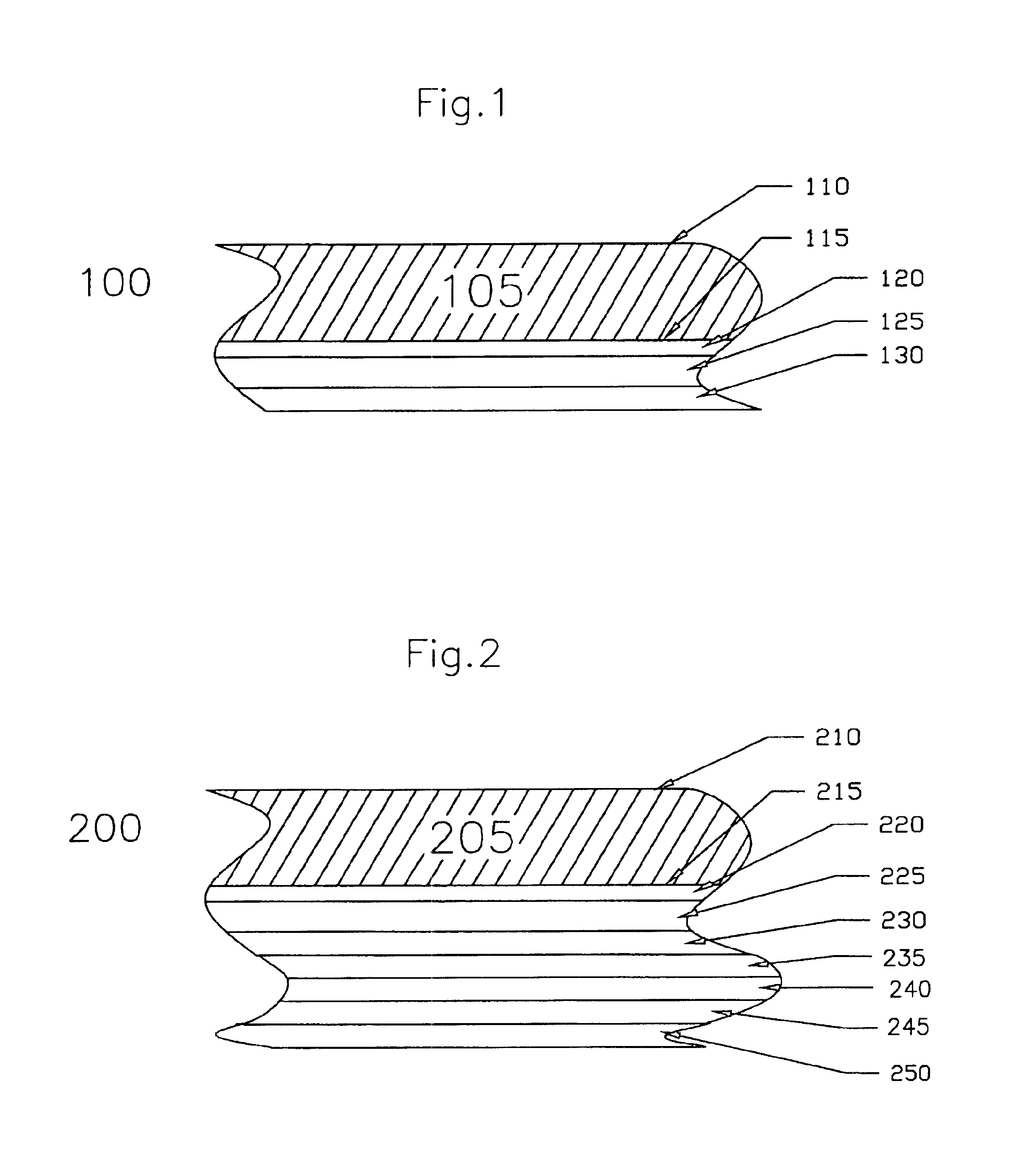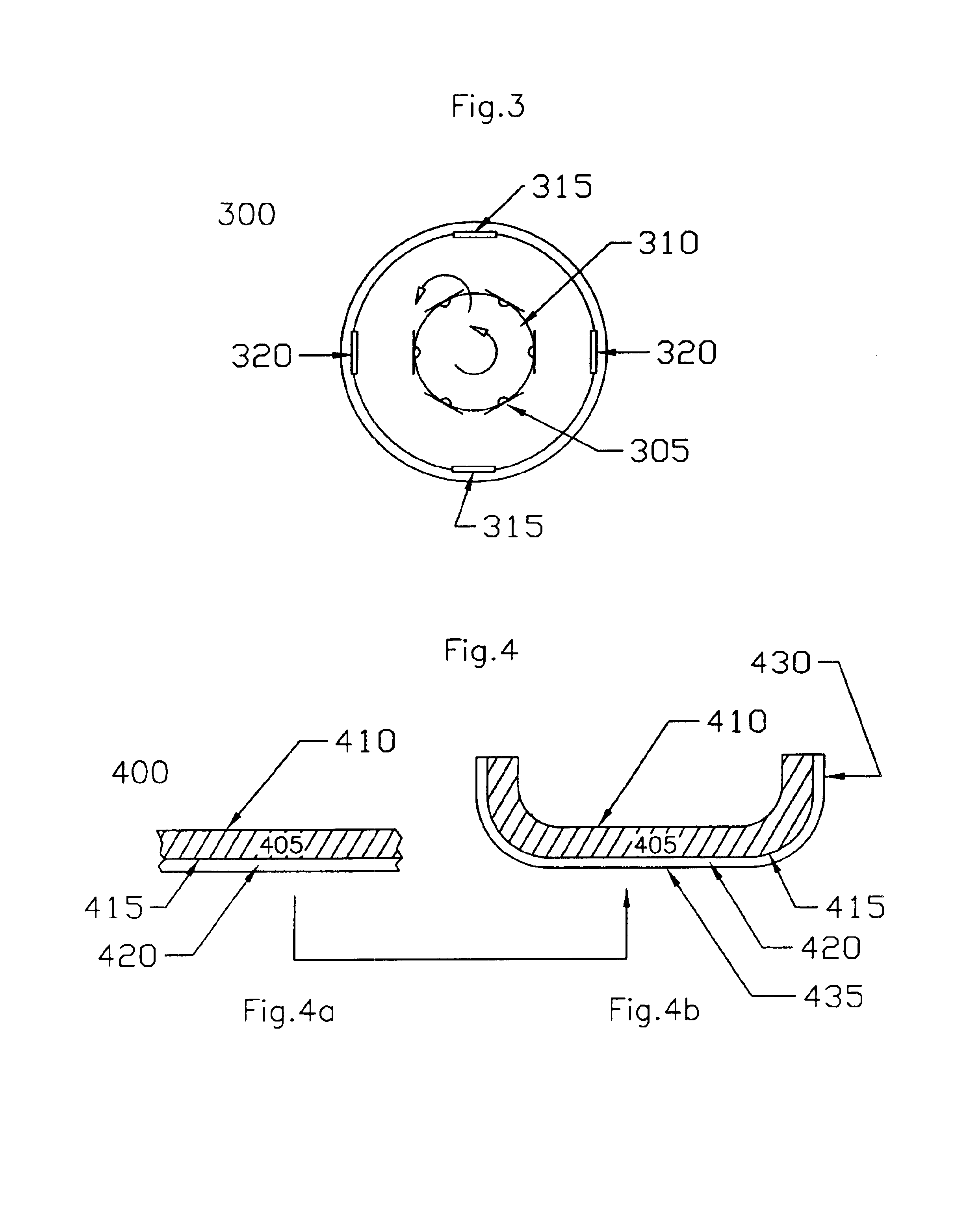Foodware with a tarnish-resistant ceramic coating and method of making
a ceramic coating and foodware technology, applied in the direction of superimposed coating process, natural mineral layered products, instruments, etc., can solve the problems of poor flame color stability of various ceramic coatings, cast iron is subject to rusting, and the coatings were not used on the heat source-contacting surface of cookware,
- Summary
- Abstract
- Description
- Claims
- Application Information
AI Technical Summary
Benefits of technology
Problems solved by technology
Method used
Image
Examples
experiment 1
[0056]Blanks of 304 stainless steel measuring 8″×8″ and 0.8 inch thick were coated using the above described process. The blanks had commercial #4 satin and #8 mirror finishes. The coated blanks were drawn into 6″ diameter pans.
[0057]FIG. 4a shows the coated blank 400. There is a blank 405, which has a surface 410 which will contact the food when the pan is formed and an opposite surface 415 which will be the outer heat source-contacting surface when the pan is formed. The coating 420 was formed on surface 415, although the individual layers are not shown. The 8″ diameter coated blank was then shallow drawn into a 6″ diameter pan with a flat bottom as shown in FIG. 4b. The coated surface is the heat source-contacting surface of the pan. The sidewalls 430 are perpendicular to the bottom 435 with a radius.
[0058]The coating of the present invention adhered well on all surfaces, including the radius area. The #4 surface finish pans had no significant change of surface texture in the rad...
experiment 2
[0059]Foodware articles of the present invention were tested for thermal stability and tarnish resistance by boiling water in pans made according to the present invention over direct gas flame and electric heating elements. The coated surface of the cookware was continuously heated for about 1.5-2 hours. This is a rather severe test compared to typical cooking conditions. The procedure was repeated 2-3 times, and the results are shown in Table 1.
[0060]Examples 1 and 2 were traditional stainless steel pots with a bottom and low sidewalls electroplated with copper. After boiling for one and two hours over high gas flame, the bottom surface showed severe oxidation and black tarnish spots. The dark oxidation spots were much worse on the bottom of the pan after two hours (Example 2), which was typical tarnish appearance on copper cookware. In that example, the tarnished spots had to be polished to be removed.
[0061]Examples 3-10 show the performance of the coating of the present invention...
PUM
| Property | Measurement | Unit |
|---|---|---|
| thick | aaaaa | aaaaa |
| total thickness | aaaaa | aaaaa |
| thickness | aaaaa | aaaaa |
Abstract
Description
Claims
Application Information
 Login to View More
Login to View More - R&D Engineer
- R&D Manager
- IP Professional
- Industry Leading Data Capabilities
- Powerful AI technology
- Patent DNA Extraction
Browse by: Latest US Patents, China's latest patents, Technical Efficacy Thesaurus, Application Domain, Technology Topic, Popular Technical Reports.
© 2024 PatSnap. All rights reserved.Legal|Privacy policy|Modern Slavery Act Transparency Statement|Sitemap|About US| Contact US: help@patsnap.com










